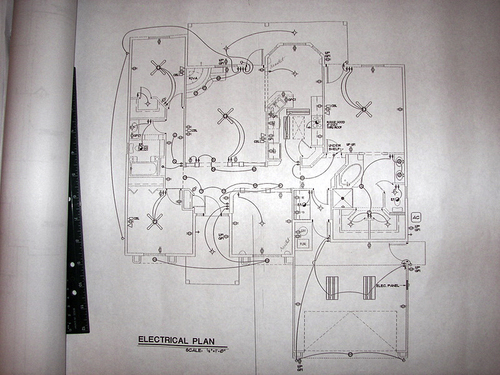CHAPTER 3

Team Management
Mastery of the content in this chapter will enable the reader to:
• List methods to become an effective leader.
• Describe and understand various management styles.
• Discuss the empowerment of team members.
• Discuss effective delegation.
• Clarify methods to increase team communication.
• List methods to resolve conflict.
• Discuss methods to increase team efficiency.
In a veterinary practice there are many benefits to employees acting as a team rather than a set of individuals. Team members recognize and understand their interdependence, allowing personal and team goals to be accomplished with mutual support. They feel a sense of pride and ownership in the practice and are committed to reaching goals that they have helped establish. All team members contribute to the success of the practice by applying their unique skills and talents to obtain those goals and by always being willing to accept new challenges. New ideas and challenges can stimulate team members to become strong performers and encourage others to follow. Team members continually work together to improve their service to clients, patients, and each other, and all of these team qualities make participation in a veterinary practice an excellent and rewarding career. A dedicated and proficient team that understands basic practice management is likely to achieve extraordinary goals and boost the practice’s compliance rate. Team building is a continuous process that never ends; the trial and error that are a part of this process allow each team member to learn and grow from the mistakes made along the way (Box 3-1).
LEADERSHIP
Excellent leaders use human, technical, and conceptual skills to succeed in that role. Human skill is the ability to understand people and what motivates them and to be able to direct their behavior through effective leadership. Not all team members respond to leadership, training, or education in the same manner. Characteristics such as shyness, lack of confidence, and poor communication skills make it hard to train some team members. Domineering, independent, and strong-willed individuals may also have a hard time accepting training. Effective leaders can determine what motivates these various personality types and have a positive influence on each (Box 3-2).
Leaders must possess several qualities to be successful. Self-confidence, sincerity, and enthusiasm for the job are essential. Leaders are effective listeners and accept diverse cultures. To have an effective team, a leader must be a team player and work to solve problems, innovate, and renovate existing policies, procedures, and environments. Leaders explain how to accomplish a task and give a challenge to the team. This allows the team members to think for themselves creatively, which can develop leaders for the future (Box 3-3).
Managing a practice requires attention to both internal and external forces (Figure 3-1). Change is required to keep up with modern technology and medicine. Leaders must be aware of innovations available and how they can improve the practice. Pharmacology, equipment, computer technology, and medicine reveal new science every year; flexibility is a must. If one innovation does not work within the practice, another should be tried. Trial and error produce the best results. Practice policies and procedures must undergo refinement on a yearly basis. Review policies that need updating, make a plan, set goals, and implement the change needed.

Four Steps of Management
Tactical planning evolves from strategic planning, beginning 1 to 3 years in advance of proposed changes, and includes the steps required to achieve the long-range goals (Box 3-4). Tactical goals might include a current equipment purchase along with continuing education for staff to become efficient with that particular piece of equipment. Ultrasound machines, for example, cost a significant amount of money and have a long learning curve. A practice must purchase the equipment and attend a significant amount of continuing education classes to become proficient at making a diagnosis with the machine. Dates should be set when developing a tactical plan; this helps facilitate and keep the strategic plan on schedule.
Become an Effective Leader
• Learn something new every day. Often, managers feel they have mastered the skills to be effective leaders. This may be true, but something can be learned from every situation. Make it a point at the beginning of each day to look for at least one new thing that can enhance the team. Once the new idea or topic has been mastered, share it with the team.
• Strive for excellence every day. It is unrealistic to expect perfection on every task and skill, but all team members should perform their best at all times; this includes all leaders, managers, and owners.
• Take charge of team morale. Negative environments are difficult to work in, and clients pick up on negative interactions. Improving team morale improves employee performance, enhances client relationships, and creates a wonderful working environment.
• Smile every day. Smiling is contagious.
• Inspire trust. Keep commitments, tell the truth, and say, “I am sorry” when needed.
• Accept and embrace suggestions. Some ideas may not be the best, but do not reject ideas given by team workers. Embrace an idea and build on it.
• Do not spread gossip or foster rumors. Curtail gossip to improve the quality of the workplace environment. Effective teams are built on trust and respect. Determine the facts and kill the gossip.
• Provide motivation. Not all team members are motivated by the same technique. Learn what motivates each individual and foster an environment that will create and maintain motivation for everyone.
• Remember that actions speak louder than words. Lead by example and the team will follow (Boxes 3-5 and 3-6).

 PRACTICE POINT
PRACTICE POINT PRACTICE POINT
PRACTICE POINT PRACTICE POINT
PRACTICE POINT PRACTICE POINT
PRACTICE POINT PRACTICE POINT
PRACTICE POINT PRACTICE POINT
PRACTICE POINT PRACTICE POINT
PRACTICE POINT PRACTICE POINT
PRACTICE POINT

